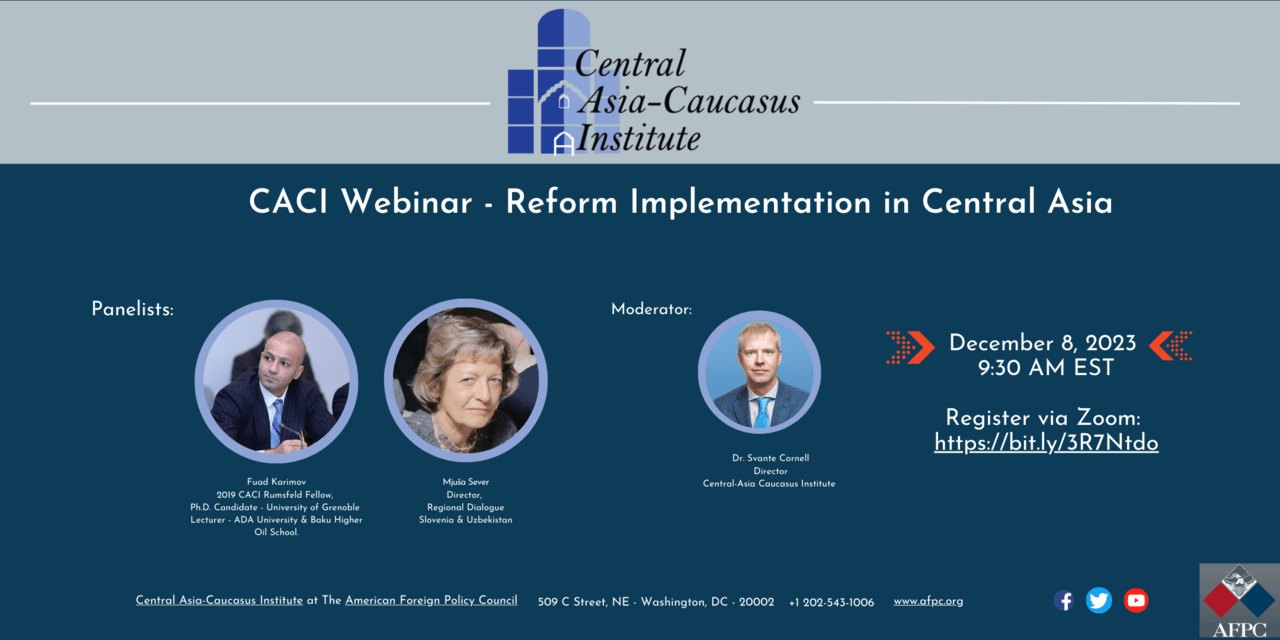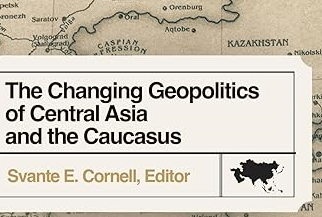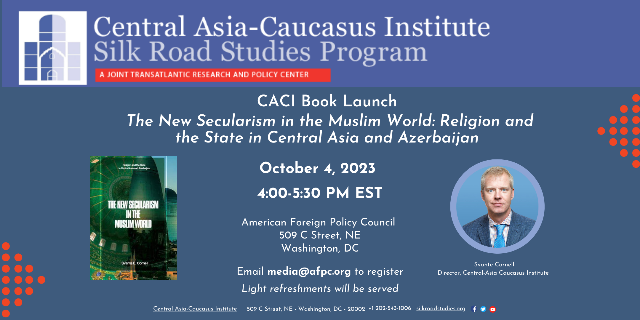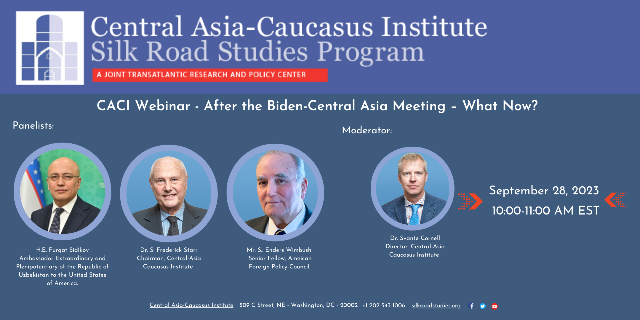Watch the 12/8 CACI Webinar - Reform Implementation In Central Asia

Central Asian governments, particularly Kazakhstan and Uzbekistan, have embarked on a series of reform initiatives in recent years. Announcing far-reaching reforms is one thing, but implementation is another. This CACI webinar delves into the question how the process of implementation of reform agendas is processing.
PANELISTS:
- Mjusa Sever, Director, Regional Dialogue, Slovenia & Uzbekistan
- Fuad Karimov, 2019 CACI Rumsfeld Fellow, Ph.D. Candidate - University of Grenoble and Lecturer - ADA University & Baku Higher Oil School
MODERATER:
- Dr. Svante Cornell, Director, Central Asia-Caucasus Institute
Watch the video below or on YouTube
The Changing Geopolitics of Central Asia and the Caucasus

Watch the fall 2023 Rumsfeld Foundation Fellows' Hybrid Forum, "United We Thrive, Divided We Fall"
10/4 CACI Book Launch: The New Secularism in the Muslim World: Religion and the State in Central Asia and Azerbaijan

Across the Muslim world, religion and politics have become increasingly mixed in the past century, with devastating consequences. But there are signs that the ascendancy of political Islam may be coming to an end. In this context, the experience of Central Asia and Azerbaijan as Muslim-majority states that insist on secular laws, courts and education is a much-overlooked model that is bound to attract greater interest. THE NEW SECULARISM is the first study of the Central Asian model in the realm of the interaction of religion and the state, which examines its characteristics as well as how it relates to other frequently touted models in the Muslim world
Join us for the book launch and a discussion of CACI director Svante Cornell's "The New Secularism in the Muslim World: Religion and the State in Central Asia and Azerbaijan."
WHEN: October 4, 2023 4:00-5:30 PM
WHERE: American Foreign Policy Council - 509 C Street, NE, Washington, DC 20002
CACI Webinar: CACI Webinar - After the Biden-Central Asia Meeting – What Now?
On September 19, President Joe Biden met with Central Asian Presidents at a C5+1 summit in New York. This marks the first time an American president has sat down with the combined leaders of this region. What will come out of this positive step in U.S. policy toward Central Asia? What should happen next? This CACI Online Forum delves into these matters.
Scroll down to watch the recording of the webinar.
Panelists:
- H.E. Furqat Sidikov, Ambassador Extraordinary and Plenipotentiary of the Republic of Uzbekistan to the United States of America
- Dr. S. Frederick Starr, Chairman, Central Asia-Caucasus Institute
- Mr. S. Enders Wimbush, Distinguished Fellow for Strategic Studies, American Foreign Policy Council
Moderator:
- Dr. Svante Cornell, Director, Central Asia-Caucasus Institute
WHEN: Thursday, September 28 - 10:00 - 11:00 AM EST


